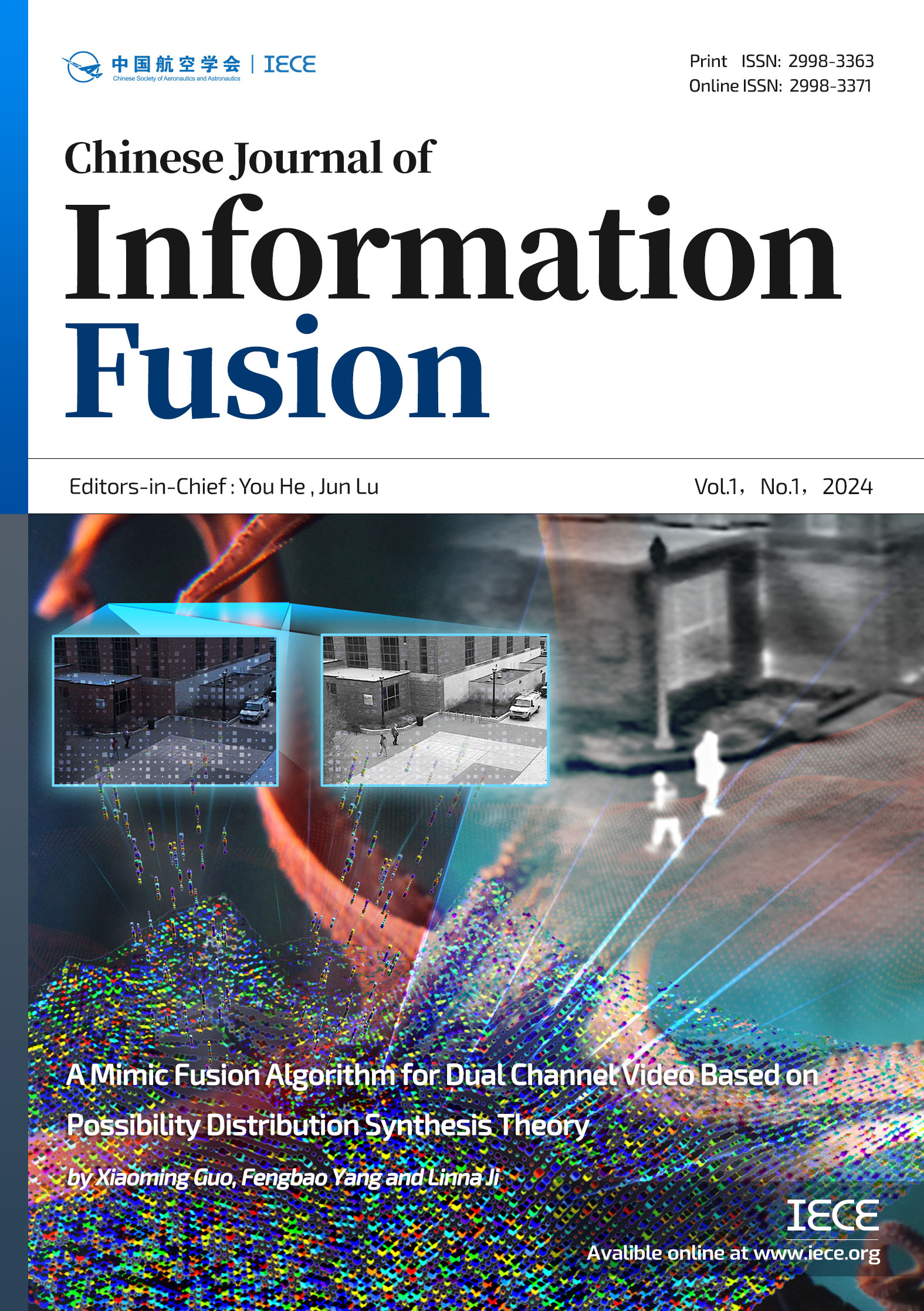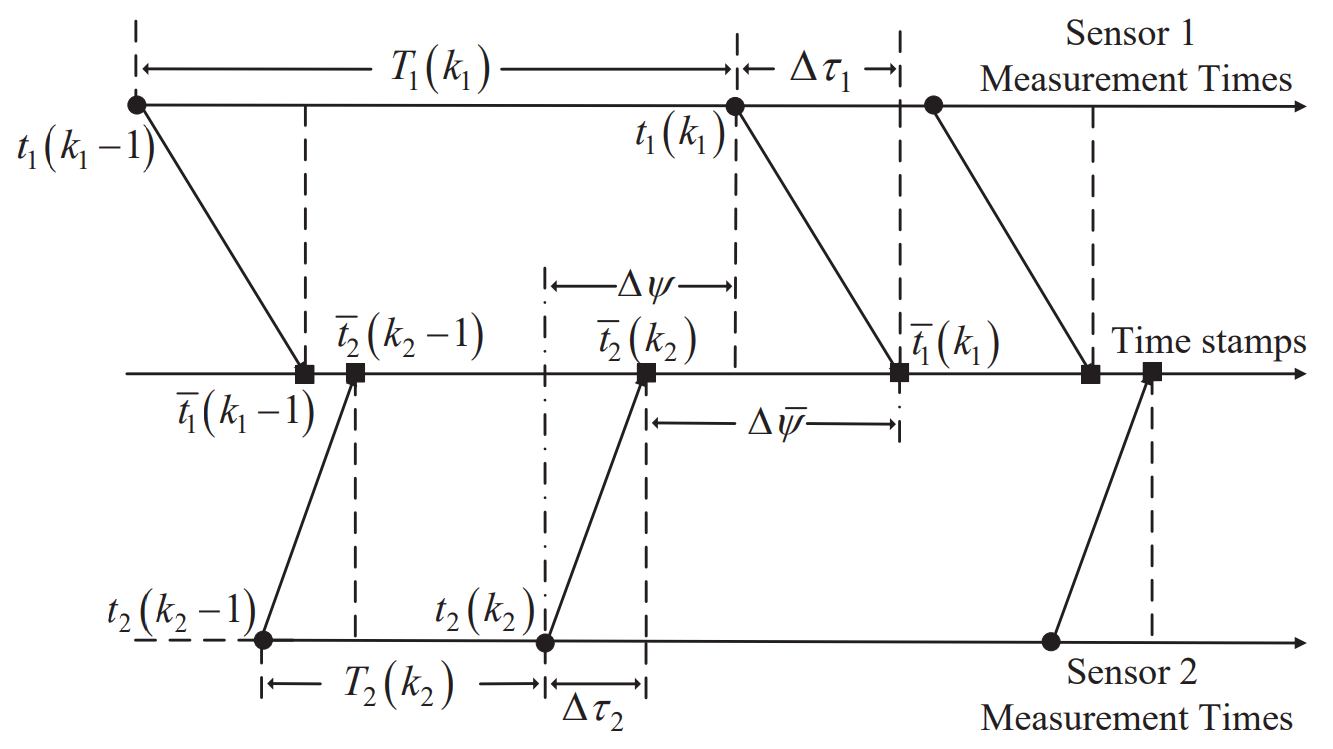Abstract
Bias estimation of sensors is an essential prerequisite for accurate data fusion. Neglect of temporal bias in general real systems prevents the existing algorithms from successful application. In this paper, both spatial and temporal biases in asynchronous multisensor systems are investigated and two novel methods for simultaneous spatiotemporal bias compensation and data fusion are presented. The general situation that the sensors sample at different times with different and varying periods is explored, and unknown time delays may exist between the time stamps and the true measurement times. Due to the time delays, the time stamp interval of the measurements from different sensors may be different from their true measurement interval, and the unknown difference between them is considered as the temporal bias and augmented into the state vector to be estimated. Multisensor measurements are collected in batch processing or sequential processing schemes to estimate the augmented state vector, results in two spatiotemporal bias compensation methods. In both processing schemes, the measurements are formulated as functions of both target states and spatiotemporal biases according to the time difference between the measurements and the states to be estimated. The Unscented Kalman Filter is used to handle the nonlinearity of the measurements and produce spatiotemporal bias and target state estimates simultaneously. The posterior Cramer-Rao lower bound (PCRLB) for spatiotemporal bias and state estimation is presented and simulations are conducted to demonstrate the effectiveness of the proposed methods.
Funding
This work was supported by the National Natural Science Foundation of China under Grant 61671181.
Cite This Article
APA Style
Zhou, G., Bu, S., & Kirubarajan, T. (2024). Simultaneous Spatiotemporal Bias Compensation and Data Fusion for Asynchronous Multisensor Systems. Chinese Journal of Information Fusion, 1(1), 16–32. https://doi.org/10.62762/CJIF.2024.361881
Publisher's Note
IECE stays neutral with regard to jurisdictional claims in published maps and institutional affiliations.
Rights and permissions
Institute of Emerging and Computer Engineers (IECE) or its licensor (e.g. a society or other partner) holds exclusive rights to this article under a publishing agreement with the author(s) or other rightsholder(s); author self-archiving of the accepted manuscript version of this article is solely governed by the terms of such publishing agreement and applicable law.


 Submit Manuscript
Edit a Special Issue
Submit Manuscript
Edit a Special Issue

